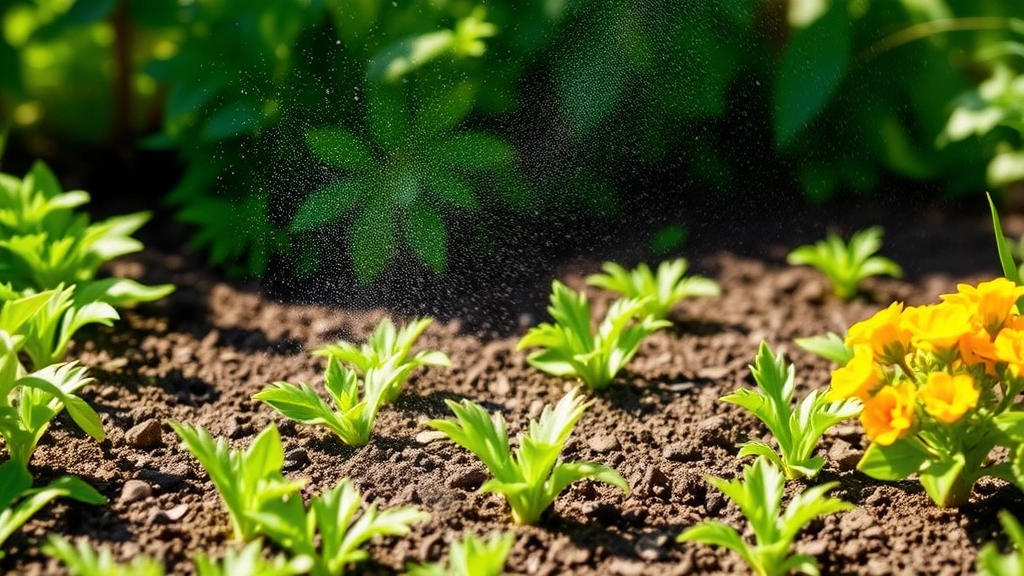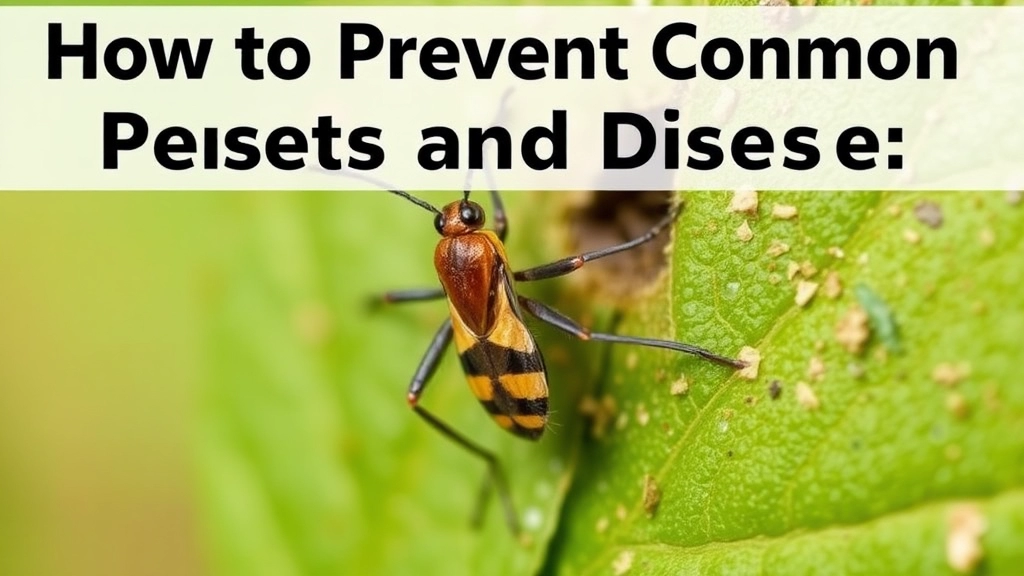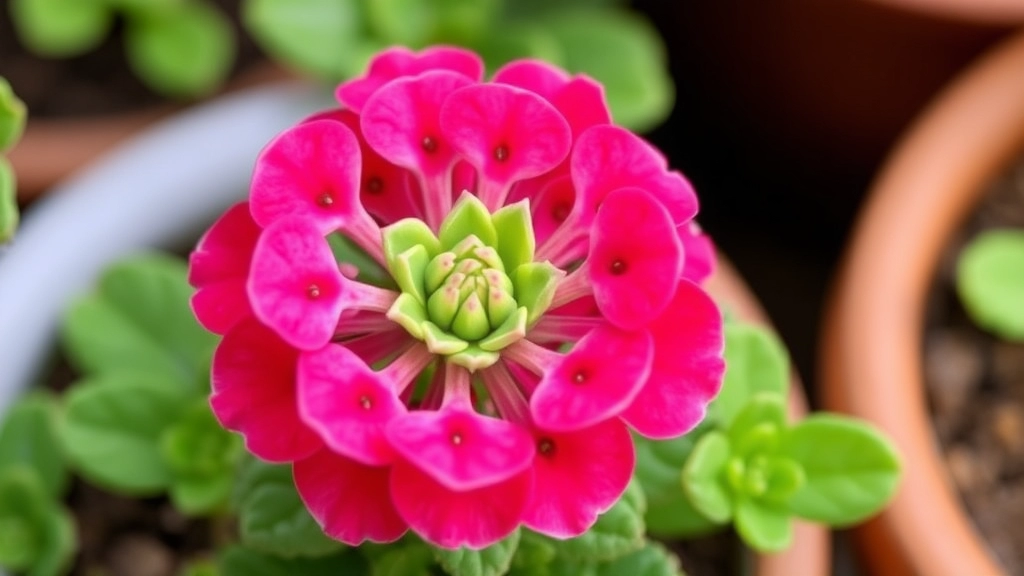Mastering Green Kalanchoe Care
Looking to master Green Kalanchoe care? You’ve come to the right place. In this guide, I’ll share practical tips to keep your Green Kalanchoe thriving. From ideal light conditions to the best soil type, we’ll cover everything you need to know to ensure your plant stays healthy and vibrant.
Light Conditions
First up, let’s talk about light. Green Kalanchoe loves bright, indirect sunlight. Too much direct sun can scorch the leaves, while too little light can make the plant leggy. Finding that sweet spot will set the foundation for a flourishing plant. Stay tuned as we dive deeper into watering schedules, soil types, and more.
When it comes to nurturing your Green Kalanchoe, light conditions can make or break your plant’s health.
Do you find your Kalanchoe struggling to thrive?
### Understanding Light Requirements
Green Kalanchoe thrives best in bright, indirect sunlight.
– **Direct Sunlight**: While they can tolerate some direct sunlight, too much can scorch their leaves.
– **Indirect Light**: A spot near a south or west-facing window is ideal. This allows for plenty of bright, filtered light.
– **Low Light Conditions**: If your plant is in a dimly lit area, it may become leggy and lose its vibrant colour.
### Signs of Proper Lighting
How can you tell if your Kalanchoe is getting the right amount of light?
– **Healthy Growth**: Look for compact growth and vibrant, green leaves.
– **Flowering**: Adequate light will encourage blooming, adding to the plant’s charm.
### Adjusting Light Exposure
If you notice your plant isn’t thriving, consider these adjustments:
– **Rotate the Plant**: Every few weeks, rotate your Kalanchoe to ensure even light exposure.
– **Move Closer to Light**: If it’s not blooming, try moving it closer to a light source.
For more detailed advice on keeping your Kalanchoe in top shape, check out our [Essential Kalanchoe Care Tips for Summer Success](https://planthq.org/essential-kalanchoe-care-tips-for-summer-success/) and learn about the [Best Soil for Kalanchoe Blossfeldiana Care](https://planthq.org/best-soil-for-kalanchoe-blossfeldiana-care-tips/).
Watering Schedule and Moisture Management

So, you’ve got your Green Kalanchoe and you’re wondering, “How often should I water this beauty?”
Let’s dive into the nitty-gritty of watering and moisture management, because getting this right is key to keeping your plant happy and thriving.
Understanding Your Plant’s Needs
Kalanchoes are succulent plants, which means they store water in their leaves. This makes them pretty forgiving when it comes to watering. Here’s what you need to know:
- Frequency: Water your Kalanchoe every 2-3 weeks. In the colder months, you can stretch this to once a month.
- Soil Check: Always check the soil before you water. Stick your finger about an inch into the soil; if it feels dry, it’s time to give it a drink.
- Drainage: Make sure your pot has good drainage. Kalanchoes hate sitting in water, so let that excess moisture escape!
Signs of Overwatering or Underwatering
It’s crucial to spot the signs early. Here’s what to look for:
- Overwatering: Yellow leaves, mushy stems, or a sour smell from the soil? That’s a red flag.
- Underwatering: If the leaves start to shrivel or wrinkle, your Kalanchoe is thirsty.
Watering Technique
When you do water, make sure to soak it well. Here’s a quick guide:
- Water until it drains: Give it a good soak until you see water coming out the bottom of the pot.
- Empty the saucer: If there’s any water left in the saucer after a few minutes, pour it out. Your plant doesn’t want to sit in it.
Humidity and Temperature
Kalanchoes prefer drier air, so don’t stress about humidity levels. Just keep them in a spot with good airflow.
- Ideal Temperature: They thrive in temperatures between 15-25°C. Avoid cold drafts!
Best Soil Type for Healthy Kalanchoe Growth
Choosing the right soil is crucial for the thriving health of your Green Kalanchoe.
Many plant enthusiasts often wonder, “What type of soil is best for my Kalanchoe?”
The answer lies in understanding its unique requirements.
How to Prevent Common Pests and Diseases

As you nurture your Green Kalanchoe, you may find yourself concerned about pests and diseases that could hinder its growth.
Identifying Common Pests:
- Mealybugs: These small, white, cotton-like pests often hide in leaf joints.
- Aphids: Tiny green or black insects that suck sap from the leaves.
- Spider Mites: Tiny red or yellow spiders that create fine webbing on the plant.
Preventive Measures:
- Regular Inspection:
- Check your plant weekly for any signs of pests.
- Look under leaves and in crevices.
- Maintain Airflow:
- Ensure your Kalanchoe is not overcrowded with other plants.
- Good airflow helps prevent fungal diseases.
- Proper Watering:
- Avoid overwatering, which can lead to root rot and attract pests.
- Let the soil dry out between waterings.
- Natural Predators:
- Introduce beneficial insects like ladybugs to your indoor garden.
- They can help keep aphid populations in check.
- Neem Oil Treatment:
- Use neem oil as a natural pesticide.
- Spray it on affected areas to deter pests without harming the plant.
Recognising Diseases:
- Powdery Mildew: White powdery spots on leaves.
- Root Rot: Wilting and yellowing leaves, often caused by overwatering.
Combatting Diseases:
- Fungicides: Apply fungicides at the first sign of powdery mildew.
- Soil Drainage: Ensure your pot has drainage holes to prevent water accumulation.
Pruning and Propagation Tips for Vigorous Plants
As we explore how to keep your Green Kalanchoe thriving, pruning and propagation are essential practices that can enhance its growth and aesthetic appeal.
Why Pruning Matters
Pruning is not just about aesthetics; it plays a crucial role in the overall health of your plant.
- Encourages New Growth: Regularly trimming back old or dead leaves stimulates new growth.
- Prevents Overcrowding: It helps maintain an open structure, allowing light to reach all parts of the plant.
- Enhances Air Circulation: Improved airflow reduces the risk of pests and diseases.
When to Prune
Timing is everything. The best time to prune your Kalanchoe is:
- After Blooming: Once the flowers have faded, it’s an ideal time to trim back the plant.
- Spring: Early spring is perfect for a rejuvenating prune before the growing season kicks in.
How to Prune
Here’s a simple guide to effective pruning:
- Gather Your Tools: Use clean, sharp scissors or pruning shears.
- Identify Dead or Yellowing Leaves: Focus on removing these first.
- Cut Above a Leaf Node: This encourages new growth from that point.
- Trim Back Overgrown Stems: Aim to shape the plant without removing too much at once.
Propagation Techniques
Once you’ve pruned your Kalanchoe, you can use the cuttings to propagate new plants.
- Leaf Cuttings:
- Select healthy leaves and cut them off.
- Allow them to dry for a day to form a callus.
- Place them in well-draining soil and water lightly.
- Stem Cuttings:
- Cut a healthy stem about 4-6 inches long.
- Remove the lower leaves and let it dry for a day.
- Plant in soil, ensuring the cut end is buried.
Tips for Successful Propagation
- Keep Moisture Levels in Check: Water lightly to prevent rot.
- Provide Indirect Light: Place in a bright spot away from direct sunlight.
- Be Patient: Roots may take a few weeks to develop.
By incorporating these pruning and propagation techniques, you can enjoy a robust and vibrant Green Kalanchoe. For more detailed information, check out our essential pruning tips for optimal growth and our step-by-step guide to propagating Kalanchoe.
Fertilizing Green Kalanchoe for Maximum Bloom
So, you’ve got your Green Kalanchoe thriving under the right light and moisture. But what about feeding it?
Why Fertilizing Matters
Fertilizing is key to getting those vibrant blooms we all love. Without the right nutrients, your plant might look a bit lacklustre.
When to Fertilize
- Growing Season: Aim to fertilize during spring and summer. This is when your Kalanchoe is most active and needs a little boost.
- Frequency: Every 4-6 weeks should do the trick.
What to Use
- Balanced Fertilizer: A balanced, water-soluble fertilizer works wonders. Look for something like a 10-10-10 mix.
- Dilution: Always dilute it to half the recommended strength. Too much can harm your plant.
Application Tips
- Watering First: Water your Kalanchoe before applying fertilizer. This helps prevent root burn.
- Even Distribution: Spread the fertilizer evenly around the base. Avoid getting it on the leaves.
Signs Your Kalanchoe Needs More Nutrients
- Yellowing Leaves: This could mean it’s time for a feed.
- Stunted Growth: If it’s not growing, check your fertilizing routine.
Bonus Tip
If you want to encourage blooming, switch to a phosphorus-rich fertilizer when buds start to form. This helps boost those beautiful flowers.
For more detailed guidance on caring for your Kalanchoe, check out our ultimate guide to Kalanchoe succulents and learn about maximizing the longevity of your Kalanchoe plant.
FAQs on Green Kalanchoe Care
How often should I water my Green Kalanchoe?
Water your Green Kalanchoe every 2-3 weeks. During colder months, you can extend this to once a month. Always check the soil moisture before watering by sticking your finger about an inch into the soil; if it feels dry, it’s time to water.
What are the signs of overwatering or underwatering my Kalanchoe?
Overwatering signs include yellow leaves, mushy stems, and a sour smell from the soil. Underwatering signs include shriveled or wrinkled leaves.
What is the best watering technique for Kalanchoes?
Water the plant until water drains out of the bottom of the pot. Make sure to empty the saucer if any water remains after a few minutes to prevent the plant from sitting in water.
What temperature and humidity levels are ideal for Kalanchoes?
Kalanchoes thrive in temperatures between 15-25°C and prefer drier air. Ensure good airflow around the plant and avoid cold drafts.
How can I prevent common pests on my Green Kalanchoe?
- Regular Inspection: Check your plant weekly for signs of pests, especially under leaves and in crevices.
- Maintain Airflow: Avoid overcrowding with other plants to ensure good airflow, which helps prevent fungal diseases.
- Proper Watering: Avoid overwatering to prevent root rot and pest attraction. Let the soil dry out between waterings.
- Natural Predators: Introduce beneficial insects like ladybugs to control aphid populations.
- Neem Oil Treatment: Use neem oil as a natural pesticide on affected areas.
What are the common pests that affect Kalanchoes?
- Mealybugs: Small, white, cotton-like pests often found in leaf joints.
- Aphids: Tiny green or black insects that suck sap from the leaves.
- Spider Mites: Tiny red or yellow spiders that create fine webbing on the plant.
How can I recognize and combat diseases in my Green Kalanchoe?
- Powdery Mildew: Look for white powdery spots on leaves. Apply fungicides at the first sign of infection.
- Root Rot: Symptoms include wilting and yellowing leaves, often due to overwatering. Ensure your pot has drainage holes to prevent water accumulation.
References
-
Growing Kalanchoe Succulents Indoors
-
Kalanchoe Plant Care: Tips on Growing Kalanchoe Plants
-
Kalanchoe: How to Grow and Care for Kalanchoe Plants
